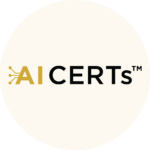
AI CERTS
6 months ago
AI Use Guide Helps Students Navigate AI in Learning
In an era where technology is transforming education, Artificial Intelligence (AI) has emerged as a critical tool to enhance learning experiences. However, many students are unsure about how to properly integrate AI into their study routines. To address this, institutions and educators are now providing comprehensive AI use guides to help students navigate AI in a responsible, efficient, and productive manner. These guides aim to assist students in leveraging AI tools, such as virtual tutors, plagiarism checkers, and content generation apps, while understanding their limitations and ethical use.
The Role of AI in Modern Learning
Artificial Intelligence is reshaping education by providing personalized learning experiences, helping students grasp concepts faster and more efficiently. AI-powered tools can analyze a student’s learning patterns and recommend customized study materials, detect areas where they struggle, and offer solutions to improve. These tools are especially useful for self-paced learners, enabling them to progress at their own speed and master difficult subjects through targeted assistance.
Related Reading: Learn how AI is revolutionizing education in this Why Students Need Guidance on AI Use

While AI tools offer significant benefits, students often face challenges in using them appropriately. Many students struggle with the ethical concerns of using AI in learning, especially when it comes to understanding what constitutes plagiarism and how much reliance on AI is acceptable in academic work. Furthermore, AI can sometimes misinterpret data, provide inaccurate information, or reinforce existing biases in its recommendations.
An AI use guide can bridge this gap by teaching students:
- How to responsibly use AI tools like essay generators, virtual tutors, and plagiarism checkers.
- When to rely on AI and when to prioritize critical thinking and human input.
- Understanding the limitations of AI, especially in tasks like essay writing, research, and creative problem-solving.
Key Features of an AI Use Guide for Students
A comprehensive AI use guide for students usually includes the following:
- Introduction to AI Tools: Guides students through the most commonly used AI tools for learning, such as Grammarly for grammar correction, Wolfram Alpha for mathematical queries, or ChatGPT for explanations of complex concepts.
- Ethical Use of AI: The guide emphasizes the importance of ethical considerations, such as not using AI to cheat on assignments, properly citing AI-generated content, and avoiding over-reliance on these tools.
- AI in Research: Explains how students can use AI to conduct research, analyze data, and organize information without compromising academic integrity. AI-driven research tools like Zotero can help students organize their sources and citations effectively.
- Problem-Solving Assistance: Students can use AI for practice problems in subjects like math and science, where virtual tutors can provide step-by-step solutions. Tools like Photomath and Khan Academy's AI-powered platforms offer real-time explanations for difficult concepts.
- Personalized Learning: The guide advises students on how to utilize AI platforms that adapt to individual learning needs. AI-based platforms such as Duolingo or Coursera can personalize study paths based on a student’s progress, helping them stay motivated and on track.
External Resource: Learn more about personalized learning with AI in education from TechCrunch.

Benefits of Using AI in Education
- 24/7 Availability: AI tutors and tools are available round the clock, providing students with access to help anytime, reducing their dependence on teacher availability.
- Immediate Feedback: AI-powered learning platforms provide instant feedback on quizzes and assignments, allowing students to identify mistakes and learn from them immediately.
- Accessible Learning: AI democratizes education by making learning resources available to students from diverse backgrounds and locations, including those in remote areas who may not have access to traditional education systems.
- Improved Efficiency: AI helps students streamline their study process by summarizing research papers, generating quick answers to common questions, and helping manage their time effectively.
Challenges and Ethical Considerations
While AI is a powerful tool, there are challenges and risks that come with its use in learning:
- Plagiarism Concerns: AI tools that generate text or solutions may be used by students to complete assignments dishonestly, leading to plagiarism issues. AI use guides focus heavily on explaining the boundaries between ethical assistance and academic dishonesty.
- Bias in AI Algorithms: AI systems are not immune to bias. Students need to be aware that AI-generated content or recommendations could reflect biased data, which may not always be accurate or fair. An AI use guide educates students on how to critically assess AI-driven results and make informed decisions.
- Over-Reliance on AI: While AI offers numerous benefits, students are encouraged not to become overly reliant on these tools. Over-reliance can stifle critical thinking and problem-solving skills, which are essential for academic success.
Conclusion: Empowering Students with AI
As AI continues to expand its role in education, providing students with the tools and knowledge to use AI responsibly is essential. By following an AI use guide, students can maximize the benefits of AI in learning while avoiding ethical pitfalls and ensuring their academic integrity remains intact.
These guides will become increasingly crucial as AI technology continues to integrate into the education system, ensuring students are prepared for a future where AI is a common part of learning and development.
Sources-
https://krmangalam.global/blog/2024/08/14/the-future-of-learning-how-ai-is-revolutionizing-education